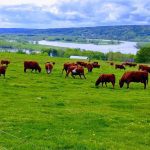
Forage

Canadian Forage and Grassland Association conference highlights forage innovation and collaboration
The conference will be based in New Brunswick in 2025

Benefits to farmers of testing forage seed
The benefits of testing forage seed can be long-lasting

No recipe, only guidelines, to cover crops
There are many factors to consider when growing cover crops

Mongolian company turns to Canada for agricultural expertise
Mongolia is behind in technology, but borders on huge markets, motivating those working in agriculture to learn as much as they can

Microbes matter during pasture restoration

Forage markets hit by volatility
Exports have been down with less demand from Asia

Comparing tame forages under grazing

Alfalfa replant disease and related disorders
While the exact cause remains unclear, we now know it’s best to wait two or three years before trying to re-establish that alfalfa stand

Forage seed producers hold steady in changing industry
With nearly 40 years producing forage seed, the Siklenka family has seen some varieties fall in and out of favour, but other things remain the same

Do you know what’s in your forage mix?
Understanding the benefits and risks of different forages, and whether they fit your goals, are vital to success



